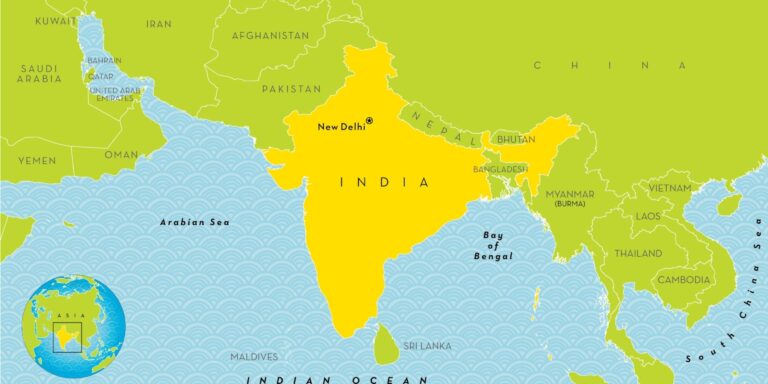As global economic dynamics continue to evolve, revitalizing bilateral trade and investment partnerships has become a priority for many countries. In this context, efforts to revive economic ties with India-a rapidly growing market and pivotal player in the global economy-are gaining renewed attention. This article explores the strategies and opportunities that governments and businesses can pursue to strengthen their economic relationship with India, addressing challenges and highlighting key sectors for collaboration.
Revitalizing Trade Partnerships through Strategic Alignment
Reestablishing robust trade relationships with India requires a clear and unified approach that aligns both nations’ economic goals. Strategic alignment emphasizes harmonizing regulatory frameworks, enhancing market access, and fostering innovation-driven collaborations. Key to this process is identifying complementary sectors where both countries can leverage their unique strengths-such as technology, pharmaceuticals, and green energy-to stimulate mutual growth. By prioritizing transparent negotiations and adaptable policies, Canada and India can overcome existing barriers and build a foundation for sustainable economic interaction.
Practical steps for revitalizing these partnerships include:
- Establishing joint economic task forces to monitor progress and address challenges
- Promoting investment-friendly environments with streamlined compliance processes
- Encouraging SME collaboration through knowledge exchange programs and trade fairs
- Leveraging digital trade platforms to reduce transaction costs and increase transparency
| Sector | Opportunity | Strategic Initiative |
|---|---|---|
| Technology | AI & Cloud Computing | Joint Innovation Hubs |
| Pharmaceuticals | Generic Drug Production | Regulatory Alignment |
| Green Energy | Solar & Wind Projects | Public-Private Partnerships |
Leveraging Technology and Innovation to Boost Bilateral Investments
The rapid advancement in technology presents a unique opportunity to deepen economic collaboration between Canada and India. By focusing on emerging sectors such as artificial intelligence, fintech, and clean energy, both countries can create a fertile ground for innovation-driven investments. Encouraging tech startups through joint incubation programs and facilitating cross-border R&D partnerships will accelerate knowledge exchange and open new market avenues. Establishing dedicated innovation hubs that cater to bilateral companies can also serve as launchpads for large-scale projects, helping investors navigate regulatory landscapes and cultural nuances more effectively.
Key strategies to promote tech-based investment growth include:
- Creating bilateral venture capital funds targeting high-impact startups
- Implementing streamlined digital visa and work permit processes for tech talents
- Organizing annual innovation summits and hackathons to connect entrepreneurs and investors
- Investing in blockchain solutions for transparent and efficient cross-border transactions
| Sector | Potential Impact | Investment Focus |
|---|---|---|
| Artificial Intelligence | Automation & Data Analytics | Research labs & startups |
| Fintech | Enhanced financial inclusion | Payment platforms & security |
| Clean Energy | Reduction in carbon footprint | Renewable projects & tech innovations |
Addressing Policy Challenges to Facilitate Seamless Economic Cooperation
Sustainable economic collaboration between nations hinges on the agility of policy frameworks. To reinvigorate ties with India, governments must prioritize the harmonization of regulatory standards and streamline customs procedures. Reducing bureaucratic red tape not only accelerates trade flows but also fosters investor confidence. Key policy reforms involve enhancing transparency in trade agreements and addressing tariff inconsistencies that have historically hindered bilateral exchanges.
Additionally, targeted incentives can catalyze joint ventures and innovation-driven partnerships, especially in emerging sectors like technology and green energy. Stakeholders emphasize the need to:
- Promote intellectual property protection to safeguard innovations
- Facilitate easier transfer of skilled labor between countries
- Implement dispute resolution mechanisms to manage conflicts swiftly
- Encourage private sector engagement in policy dialogues
| Policy Focus | Expected Outcome | Timeline |
|---|---|---|
| Trade Tariff Harmonization | 10-15% Increase in Trade Volume | 12 Months |
| Customs Process Simplification | 30% Faster Clearance Time | 6 Months |
| IP Rights Strengthening | Attract Foreign Direct Investment | Ongoing |
Concluding Remarks
Rebuilding and strengthening economic ties with India represents a crucial opportunity for Canada to diversify trade partnerships and tap into one of the world’s fastest-growing markets. As both nations navigate the complexities of global economic shifts, fostering collaboration through targeted policies, enhanced diplomatic engagement, and mutual investment will be key. Moving forward, sustained commitment from government, business leaders, and stakeholders on both sides will determine the success of this renewed partnership, promising significant benefits for their economies and beyond.




